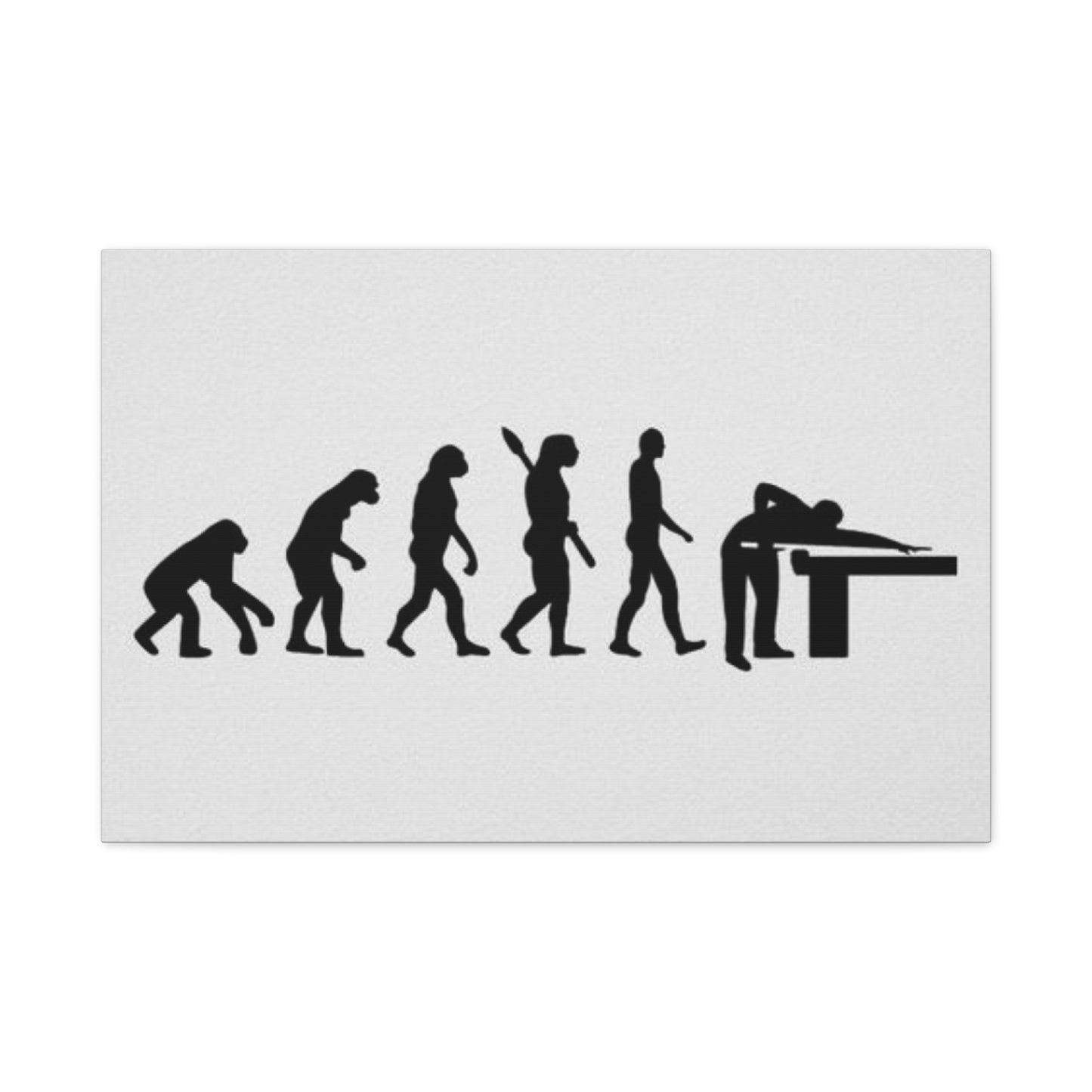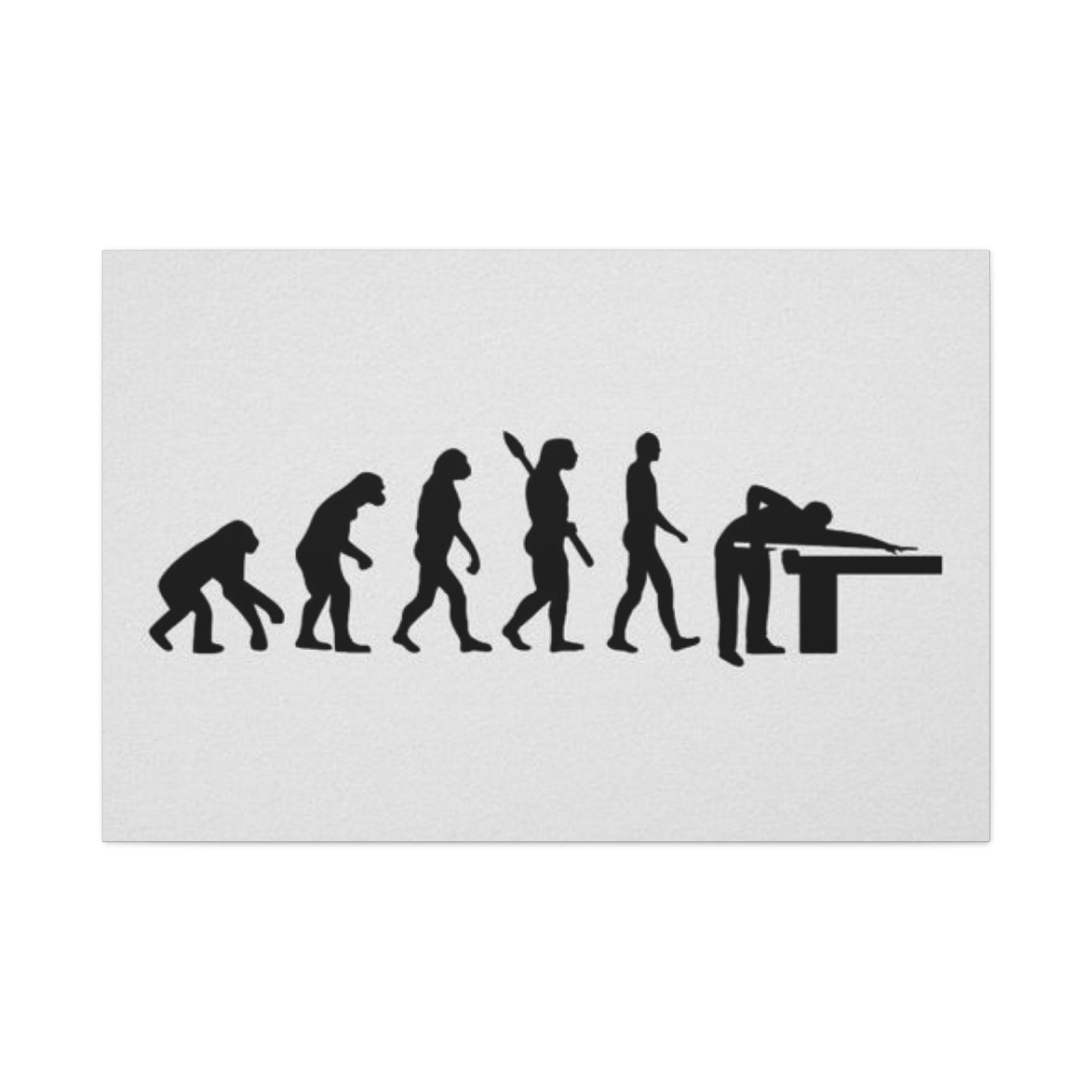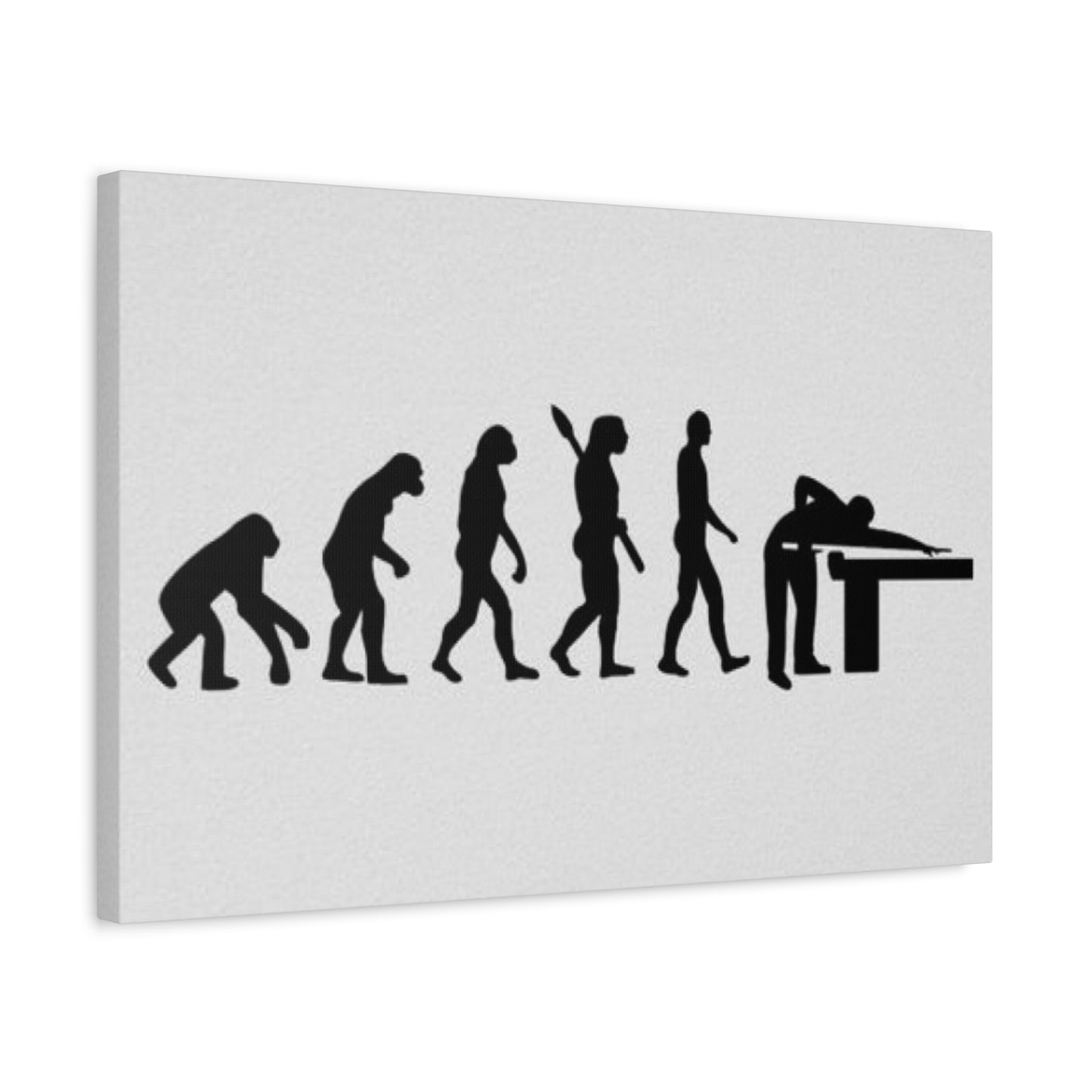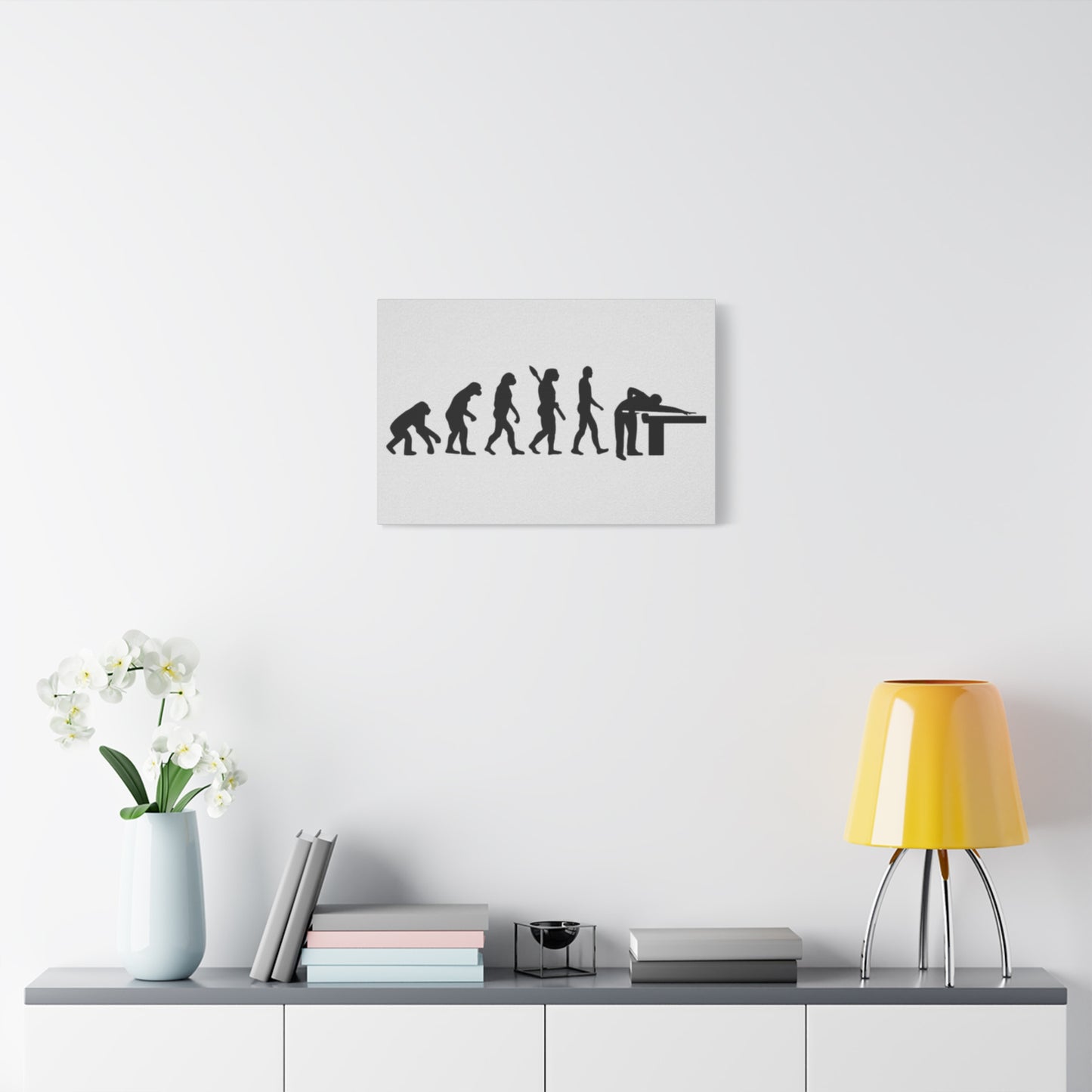Pool Progression Chronicles: The Evolution of Cue Sports Wall Art Through Time
The world of cue sports has undergone remarkable transformations throughout history, and these changes have been beautifully captured through artistic expressions that now grace walls across the globe. From humble tavern games to sophisticated professional competitions, the journey of pool playing has inspired countless artists to create stunning visual narratives that tell the story of this beloved pastime. Pool progression wall art serves as both decorative enhancement and historical documentation, preserving the rich heritage of billiards through various artistic mediums.
The fascination with documenting pool's evolution through visual art stems from the game's unique ability to combine skill, strategy, and social interaction. Artists have long been drawn to the geometric beauty of the table, the precision of the shots, and the human drama that unfolds around the green felt. These elements have translated into magnificent wall art pieces that capture not just the physical aspects of the game, but also its cultural significance and evolution over time.
Throughout different eras, pool playing wall art has reflected the changing social attitudes, technological advancements, and aesthetic preferences of each period. From classical oil paintings depicting gentlemen's clubs to modern digital prints showcasing contemporary tournament scenes, each piece tells a story about both the game and the society in which it was created. The evolution of artistic techniques mirrors the evolution of the game itself, creating a parallel narrative that enriches our understanding of both art and sport.
Historical Origins and Early Artistic Representations
The earliest forms of pool playing wall art can be traced back to medieval Europe, where outdoor lawn games began transitioning into indoor table sports. During this period, artists primarily focused on depicting the social aspects of cue sports, showing wealthy patrons engaged in leisurely games within opulent settings. These early artistic representations often emphasized the luxury and exclusivity associated with billiards, portraying it as a gentleman's pursuit reserved for the upper classes.
Renaissance artists began incorporating pool scenes into larger works, often as background elements in portraits or genre paintings. The geometric precision required for accurate table representation appealed to artists interested in perspective and mathematical accuracy. These early depictions established many of the visual conventions that would persist in pool art for centuries, including the emphasis on the table's rectangular form, the dramatic lighting effects created by hanging lamps, and the careful attention to player postures and cue positioning.
As printing technologies advanced during the 16th and 17th centuries, pool-themed artwork became more accessible to broader audiences. Woodcuts and engravings depicting various cue sports began appearing in books, broadsheets, and decorative prints. These mass-produced images helped popularize both the games themselves and the artistic tradition of representing them, creating a demand for pool-themed wall art that extended beyond aristocratic circles.
The development of oil painting techniques during this period allowed artists to capture the subtle nuances of light reflecting off polished balls and felt surfaces. Master painters began treating pool scenes as opportunities to demonstrate their technical skills, particularly in rendering different textures and materials. The interplay between the smooth spherical surfaces of the balls, the rough texture of the felt, and the polished wood of the cue sticks created complex visual challenges that pushed artists to refine their techniques.
Religious and moral themes occasionally intersected with pool imagery during the early modern period, as some artists used billiard scenes to comment on gambling, leisure, and social behavior. These allegorical works often depicted pool playing as either virtuous recreation or dangerous vice, depending on the artist's perspective and intended audience. Such pieces added layers of meaning to pool wall art, transforming simple game documentation into complex social commentary.
Renaissance Period Pool Depictions
During the Renaissance, pool playing wall art experienced significant evolution as artistic techniques became more sophisticated and subject matter more diverse. Italian artists of the 15th and 16th centuries began incorporating billiard scenes into their works with increasing frequency, often as symbols of leisure, wealth, and social status. The mathematical principles of perspective that characterized Renaissance art proved particularly well-suited to depicting the geometric precision of pool tables and the spatial relationships between players.
Venetian painters excelled at capturing the atmospheric qualities of indoor gaming establishments, using their mastery of light and shadow to create dramatic scenes around pool tables. The interplay of candlelight and natural illumination provided rich opportunities for chiaroscuro effects, with the green felt serving as a striking focal point against darker surrounding elements. These atmospheric qualities became defining characteristics of Renaissance pool art, establishing visual conventions that would influence artists for generations.
The period saw increasing attention to psychological portraiture within pool scenes, as artists began exploring the emotional dynamics between players. Rather than simply documenting the physical aspects of the game, Renaissance pool art began investigating themes of competition, strategy, and social interaction. Facial expressions, body language, and gestural details received careful attention, transforming pool wall art into sophisticated studies of human behavior and motivation.
Technical innovations in paint formulation during the Renaissance allowed for more accurate color reproduction, particularly important for capturing the specific hues associated with pool equipment. The distinctive green of billiard felt, the rich browns of wooden cues, and the varied colors of different ball sets could be rendered with unprecedented accuracy. This technical precision enhanced the documentary value of pool art while also increasing its aesthetic appeal.
Northern European artists, particularly those from the Netherlands and Flanders, developed their own approaches to pool imagery during this period. Flemish painters emphasized domestic settings and middle-class participants, creating more intimate and accessible pool scenes compared to the grand aristocratic depictions favored by Italian masters. These regional variations enriched the overall tradition of pool wall art, providing diverse perspectives on the game's cultural significance.
Baroque and Classical Influences
The Baroque period brought dramatic transformation to pool playing wall art, as artists embraced the movement's characteristic emphasis on drama, emotion, and visual spectacle. Baroque pool paintings featured dynamic compositions with pronounced diagonal lines, dramatic lighting contrasts, and heightened emotional content. The relatively static nature of traditional pool imagery was revolutionized through innovative compositional approaches that captured the tension and excitement of competitive play.
Caravaggio's revolutionary chiaroscuro technique profoundly influenced pool art during this period, with many artists adopting similar approaches to lighting and shadow. The dramatic interplay between light and dark proved particularly effective in pool scenes, where the concentrated illumination of the playing surface contrasted sharply with the surrounding darkness. This lighting approach not only enhanced the visual drama but also focused attention on the critical moments of play.
Classical themes began appearing more frequently in pool wall art during the 17th and 18th centuries, as artists drew parallels between modern cue sports and ancient games. Mythological references and allegorical elements were incorporated into pool scenes, elevating the subject matter from simple genre painting to more ambitious historical and literary themes. These classical influences added intellectual depth to pool art while maintaining its popular appeal.
The development of larger canvas formats during the Baroque period enabled artists to create more ambitious pool compositions, often featuring multiple tables, numerous figures, and complex architectural settings. These grand-scale works transformed pool art from intimate genre scenes into spectacular public displays, suitable for decorating the walls of palaces, manor houses, and important public buildings.
French artists of the classical period developed particularly refined approaches to pool imagery, emphasizing elegance, sophistication, and social grace. The French Academy's influence encouraged artists to treat pool scenes as opportunities for demonstrating technical mastery while adhering to established principles of composition and proportion. This academic approach to pool art established standards of excellence that influenced artistic education and practice throughout Europe.
Color theory advances during the classical period enhanced the visual appeal of pool wall art, as artists gained better understanding of how different hues interact and affect viewer perception. The strategic use of complementary colors, particularly the contrast between the green felt and red or orange elements, became a hallmark of sophisticated pool art. These color relationships created visual harmony while directing attention to key compositional elements.
Industrial Revolution Impact on Pool Art
The Industrial Revolution fundamentally transformed both pool playing and its artistic representation, introducing new materials, techniques, and social contexts that profoundly influenced wall art creation. Mass production of billiard equipment made the game more accessible to middle-class audiences, expanding the potential market for pool-themed artwork and encouraging artists to explore more diverse approaches to the subject.
Lithography, invented in the late 18th century, revolutionized the production and distribution of pool wall art. This new printing technique allowed for more affordable reproduction of artistic works, making pool imagery accessible to broader audiences than ever before. Popular lithographic prints featuring pool scenes became common decorations in taverns, clubs, and private homes, establishing pool art as a significant category within popular culture.
The development of gas lighting and later electric illumination changed the visual character of pool environments, providing artists with new lighting conditions to explore and depict. The steady, bright illumination possible with artificial lighting eliminated many of the dramatic shadow effects that characterized earlier pool art, leading artists to focus more on color relationships, surface textures, and detailed rendering of equipment and player expressions.
Industrial production methods also influenced artistic techniques, as artists began experimenting with new pigments, canvas materials, and painting tools developed for commercial applications. These technological advances allowed for more vibrant colors, longer-lasting artworks, and more efficient production processes. The democratization of art materials paralleled the democratization of pool playing itself, both becoming more accessible to broader populations.
Railroad expansion and improved transportation systems facilitated the spread of pool culture and its artistic documentation. Artists could travel more easily to observe different regional variations of the game, while artwork could be distributed more efficiently across wider geographic areas. This increased mobility and distribution contributed to the development of more standardized approaches to pool imagery while also preserving regional variations and local traditions.
Photography's emergence during the mid-19th century provided artists with new reference materials and documentary approaches to pool imagery. Photographic studies of player positions, equipment details, and game environments offered unprecedented accuracy in depicting technical aspects of pool playing. However, many artists viewed photography as a complement rather than replacement for traditional artistic approaches, using photographic references to enhance rather than replace their creative interpretations.
Modern Era Artistic Movements
The advent of modernist artistic movements in the late 19th and early 20th centuries brought radical new approaches to pool playing wall art. Impressionist artists discovered in pool scenes opportunities to explore light, color, and atmosphere in ways that aligned with their aesthetic principles. The reflective surfaces of billiard balls, the texture of felt under various lighting conditions, and the casual social atmosphere of pool halls provided rich subject matter for impressionist exploration.
Post-impressionist artists pushed even further from traditional representational approaches, using pool imagery as vehicles for experimenting with color theory, compositional structure, and emotional expression. The geometric elements inherent in pool playing proved particularly appealing to artists interested in formal analysis and abstract composition. The circular forms of balls, linear elements of cues, and rectangular table boundaries provided ready-made geometric frameworks for artistic experimentation.
Cubist approaches to pool art fragmented traditional perspective and representational conventions, creating dynamic compositions that captured multiple viewpoints simultaneously. The analytical breakdown of form that characterized cubism proved remarkably well-suited to pool imagery, as the game itself involves complex spatial relationships and multiple perspectives. These experimental approaches expanded the artistic possibilities for pool wall art while challenging viewers to see familiar subjects in entirely new ways.
Art Nouveau influences appeared in pool art through decorative elements, flowing lines, and organic motifs that complemented the geometric structure of the game. Artists working in this style often incorporated elaborate decorative frameworks around pool scenes, creating unified designs that functioned both as artistic statements and decorative objects. The integration of text, ornamental elements, and figurative imagery characteristic of Art Nouveau enhanced the visual appeal and commercial viability of pool wall art.
Expressionist approaches to pool art emphasized emotional content and subjective interpretation over objective documentation. The competitive tensions, social dynamics, and personal dramas that unfold around pool tables provided rich material for expressionist exploration. Bold colors, distorted forms, and exaggerated gestures became tools for communicating the psychological dimensions of pool playing rather than merely its physical appearances.
The development of abstract art created entirely new possibilities for pool-themed wall art, as artists began exploring the essential forms, colors, and rhythms associated with the game rather than literal representation. Geometric abstraction, in particular, found natural connections with pool imagery, as the mathematical relationships inherent in the game aligned with abstract artistic principles. These abstract approaches expanded the definition of pool art while maintaining meaningful connections to the source subject.
Contemporary Digital Art Revolution
The digital revolution of the late 20th and early 21st centuries has fundamentally transformed pool playing wall art, introducing new tools, techniques, and distribution methods that have expanded both creative possibilities and audience reach. Digital art software allows artists to experiment with effects, colors, and compositions that would be difficult or impossible to achieve with traditional media, while offering greater flexibility in editing and refining their work.
Computer graphics capabilities have enabled the creation of hyper-realistic pool art that captures minute details of equipment, lighting, and atmospheric effects with unprecedented precision. Digital artists can simulate complex reflections, shadows, and surface textures that enhance the illusion of three-dimensional depth while maintaining the clarity and vibrancy that characterize the best digital artwork. These technical capabilities have raised new standards for visual accuracy in pool wall art.
Vector graphics applications have proven particularly well-suited to pool art creation, as the geometric nature of the game aligns naturally with vector-based drawing tools. The precise lines, perfect circles, and clean edges possible with vector graphics capture the mathematical precision that characterizes pool playing while offering infinite scalability for different wall art applications. This technical approach has become increasingly popular for contemporary pool art production.
Digital painting techniques combine the flexibility of traditional painting with the precision and editability of computer-based tools. Artists can experiment with different color schemes, lighting conditions, and compositional arrangements without the time and material costs associated with traditional media. This experimentation has led to more diverse and innovative approaches to pool wall art, as artists can explore ideas more freely and iterate more rapidly.
Three-dimensional modeling and rendering capabilities have opened entirely new categories of pool wall art, allowing artists to create photorealistic scenes from any conceivable viewpoint or lighting condition. These tools enable the creation of impossible or fantastical pool environments while maintaining convincing realism in execution. The ability to manipulate virtual cameras and lighting setups provides unprecedented control over the final artistic result.
Online galleries and print-on-demand services have revolutionized the distribution and accessibility of pool wall art. Artists can now reach global audiences without traditional gallery representation or publishing arrangements, while customers can access vast collections of pool art from international creators. This democratization of both creation and distribution has greatly expanded the variety and availability of pool-themed wall art options.
Cultural Symbolism and Meaning
Pool playing wall art has consistently served as more than mere decoration, functioning as a complex system of cultural symbols and meanings that reflect broader social values, aspirations, and identities. The game itself carries rich symbolic associations with skill, strategy, social interaction, and leisure that translate into meaningful artistic content capable of communicating sophisticated messages about personal and cultural identity.
The democratic nature of pool, accessible to players regardless of social background, has made it a powerful symbol of egalitarian values and social mobility. Wall art depicting pool scenes often emphasizes these democratic ideals, showing players from diverse backgrounds united by their shared appreciation for the game. This symbolic content resonates particularly strongly in cultures that value equality and opportunity, making pool art an expression of social values as well as aesthetic preferences.
Competitive elements inherent in pool playing provide rich material for exploring themes of challenge, achievement, and personal development. Pool wall art often captures moments of triumph, defeat, concentration, and determination that speak to universal human experiences of striving and accomplishment. These themes extend the appeal of pool art beyond game enthusiasts to anyone who appreciates narratives of personal challenge and growth.
The precision and skill required for excellent pool playing have established the game as a metaphor for expertise, craftsmanship, and professional excellence in various fields. Pool wall art often emphasizes these qualities through careful attention to technical details, precise rendering of equipment and player positions, and focus on moments that demonstrate exceptional skill. This symbolic association with excellence makes pool art appealing to those who value craftsmanship and professional achievement.
Social aspects of pool playing, particularly its role as a venue for friendship, relaxation, and community building, appear frequently in artistic representations. Pool halls and home game rooms serve as gathering places where social bonds are formed and maintained, and wall art often captures these communal aspects of the game. The social symbolism embedded in pool art makes it particularly appropriate for decorating gathering areas and entertainment environments.
The geometric beauty and mathematical precision visible in pool playing have attracted artists interested in exploring relationships between order and chaos, planning and spontaneity, control and chance. These philosophical dimensions add intellectual depth to pool wall art while creating visual compositions that appeal to viewers interested in both aesthetic beauty and conceptual content. The interplay between skill and luck that characterizes pool provides rich material for artistic exploration of these universal themes.
Regional Variations and Styles
Different geographic regions have developed distinctive approaches to pool playing wall art that reflect local cultural values, artistic traditions, and aesthetic preferences. These regional variations enrich the overall tradition of pool art while providing insight into how universal themes adapt to specific cultural contexts and artistic environments.
American pool art has consistently emphasized the game's association with popular culture, entertainment, and social democracy. From Norman Rockwell's idealized depictions of small-town pool halls to contemporary urban artists' explorations of street culture and hip-hop aesthetics, American pool wall art reflects the nation's cultural diversity and democratic values. The emphasis on individual achievement, competitive spirit, and social mobility that characterizes American culture appears consistently in domestic pool art production.
European approaches to pool wall art often emphasize the game's historical connections to aristocratic leisure and intellectual sophistication. Classical composition techniques, refined color palettes, and careful attention to decorative details reflect European artistic traditions that value elegance, cultivation, and cultural continuity. These stylistic preferences create pool art that functions equally well in traditional and contemporary settings.
British pool art frequently incorporates elements of pub culture, working-class identity, and social humor that reflect the game's important role in British social life. The informal, convivial atmosphere of British pool culture translates into artwork that emphasizes character, personality, and social interaction rather than technical prowess or competitive intensity. This approach creates pool art with strong narrative content and accessible emotional appeal.
Asian interpretations of pool wall art often integrate elements of traditional artistic philosophy, emphasizing harmony, balance, and spiritual dimensions of the game. The meditative aspects of careful shot planning and precise execution align with Buddhist and Taoist concepts of mindfulness and flow states, creating pool art that functions as both decoration and contemplative focus. These philosophical dimensions add unique depth to Asian pool art production.
Latin American pool artists frequently incorporate vibrant color palettes, dynamic compositions, and celebratory themes that reflect the region's rich artistic traditions and festive culture. The social and communal aspects of pool playing receive particular emphasis, with artwork often depicting extended family gatherings, community celebrations, and intergenerational bonding around pool tables. This cultural perspective creates pool art with strong emotional warmth and inclusive appeal.
Contemporary global communications have facilitated cross-cultural exchange of artistic techniques and thematic approaches, leading to hybrid styles that combine elements from multiple traditions. International art exhibitions, online galleries, and collaborative projects have created opportunities for artists from different regions to influence each other while maintaining their distinctive cultural perspectives on pool art creation.
Materials Evolution
The evolution of artistic techniques and materials used in creating pool playing wall art reflects broader developments in art production while responding to the specific requirements and opportunities presented by pool-themed subject matter. Traditional oil painting techniques established many foundational approaches that continue to influence contemporary pool art production.
Oil painting's capacity for subtle gradations, rich color saturation, and detailed rendering made it the preferred medium for early pool art masters. The slow drying time of oils allowed artists to work carefully on complex details such as ball reflections, felt textures, and subtle lighting effects that characterize the best traditional pool paintings. These technical capabilities established standards of realism and craftsmanship that continue to influence contemporary pool art evaluation.
Watercolor techniques offered different possibilities for pool art creation, particularly in capturing atmospheric effects and spontaneous moments of play. The transparency and fluidity of watercolors proved well-suited to depicting the casual, social aspects of pool culture while requiring different approaches to rendering the geometric precision of equipment and table surfaces. Master watercolorists developed specialized techniques for maintaining accuracy while exploiting the medium's expressive possibilities.
Printmaking technologies, from traditional woodcuts to contemporary digital printing, have played crucial roles in making pool wall art accessible to broader audiences. Lithography, screenprinting, and etching each offered unique aesthetic possibilities while enabling mass production of popular pool imagery. These reproductive techniques influenced artistic approaches by encouraging clarity, strong contrast, and bold graphic elements that reproduce effectively in printed form.
Mixed media approaches to pool art combine multiple materials and techniques to achieve effects impossible with single media. Contemporary artists frequently incorporate photographic elements, found objects, textural materials, and alternative surfaces to create pool art that pushes beyond traditional boundaries. These experimental approaches reflect contemporary art's emphasis on conceptual innovation and material exploration.
Digital art tools have revolutionized pool wall art production by offering unprecedented control over color, composition, and detail. Software applications designed for digital painting, vector graphics, and three-dimensional modeling provide capabilities that exceed traditional media in many areas while requiring different skills and aesthetic sensibilities. The integration of digital and traditional techniques has become increasingly common in contemporary pool art production.
Alternative surfaces and presentation methods have expanded the definition of pool wall art beyond traditional canvas and paper formats. Metal prints, acrylic mounting, fabric printing, and large-format digital outputs create new possibilities for integrating pool art into architectural and decorative environments. These technical innovations respond to contemporary preferences for bold scale, durability, and visual impact.
Psychology and Emotional Appeal
The psychological dimensions of pool playing wall art contribute significantly to its enduring popularity and emotional impact on viewers. The game itself evokes complex emotional responses related to competition, skill development, social interaction, and leisure that translate into powerful artistic content capable of engaging viewers on multiple levels.
Competitive tension inherent in pool playing provides rich material for exploring psychological themes of challenge, pressure, and achievement. Artists frequently capture moments of intense concentration, calculated risk-taking, and triumphant success that resonate with viewers' own experiences of competition and accomplishment. This psychological content adds emotional depth to pool art while creating connections between artwork and viewer experience.
The meditative aspects of pool playing, particularly the focused attention required for precise shot execution, appeal to viewers seeking artwork that promotes calm contemplation and mental clarity. The geometric beauty and mathematical precision visible in well-executed pool shots create visual experiences that can induce flow states and peaceful absorption. This contemplative quality makes pool art appropriate for environments designed for relaxation and mental restoration.
Social bonding and community building that occur around pool tables provide emotional content that appeals to viewers' desires for connection and belonging. Pool wall art often depicts friendship, mentorship, and intergenerational relationships that develop through shared game experiences. These social themes create artwork with emotional warmth and inclusive appeal that enhances the atmosphere of gathering areas and entertainment environments.
Nostalgia plays a significant role in the emotional appeal of pool wall art, as many viewers associate the game with positive memories of youth, friendship, and leisure. Artistic representations that capture the atmosphere of traditional pool halls, family game rooms, or casual social gatherings can evoke powerful emotional responses that transcend the artwork's immediate visual content. This nostalgic dimension adds personal significance to pool art collection and display.
The aspirational aspects of pool skill development provide psychological content that appeals to viewers' desires for self-improvement and mastery. Pool art that depicts exceptional skill, precise technique, or professional-level performance can inspire viewers while providing vicarious experiences of excellence and achievement. This motivational dimension makes pool art particularly appropriate for environments where personal development and goal achievement are valued.
Color psychology principles influence the emotional impact of pool wall art, with the traditional green felt creating associations with nature, growth, and harmony. The warm wood tones typically associated with pool equipment evoke feelings of comfort and tradition, while the bright colors of different balls add energy and visual interest. Skilled artists manipulate these color relationships to achieve specific emotional effects while maintaining visual accuracy.
Collecting and Investment Considerations
Pool playing wall art has developed into a significant collecting category that attracts both game enthusiasts and general art collectors interested in sporting themes, historical documentation, and decorative enhancement. Understanding the factors that influence value and collectibility helps both novice and experienced collectors make informed decisions about acquisition, display, and preservation.
Historical significance represents a primary factor in determining the collectible value of pool wall art. Pieces that document important periods in game development, feature notable players or venues, or represent significant artistic movements command premium prices and sustained collector interest. The documentation of pool's evolution through different eras creates historical value that extends beyond pure aesthetic considerations.
Artist reputation and skill significantly influence the market value of pool art, with works by recognized masters commanding higher prices than anonymous or amateur productions. The technical quality of execution, particularly in rendering the complex geometric and textural elements associated with pool equipment and environments, affects both aesthetic appeal and long-term value retention. Collectors often focus on artists who demonstrate exceptional skill in depicting pool-specific elements.
Rarity and edition size play crucial roles in determining collectible value, with unique original works typically commanding higher prices than mass-produced prints or reproductions. Limited edition prints, particularly those signed by artists or featuring special presentation elements, occupy middle ground between unique originals and unlimited reproductions. Understanding edition structures and documentation helps collectors make informed purchasing decisions.
Condition and preservation considerations affect both current value and long-term collectibility of pool wall art. Factors such as color fading, physical damage, and previous restoration work influence market value while requiring specialized knowledge for accurate assessment. Proper display conditions, including appropriate lighting, humidity control, and protection from physical damage, help maintain value while enabling enjoyment of collected works.
Market trends and cultural factors influence the collectibility and value of pool wall art over time. Periods of increased interest in pool culture, sporting art, or specific artistic movements can drive demand and prices for relevant works. Understanding these cyclical patterns helps collectors time acquisitions and disposals while building collections with long-term appreciation potential.
Authentication and provenance documentation become increasingly important as pool art values rise and market sophistication increases. Establishing clear ownership history, artist attribution, and creation details helps protect investment value while providing confidence in acquisition decisions. Professional appraisal and authentication services can provide valuable guidance for significant purchases or insurance purposes.
Technological Advances in Production
Contemporary technological advances have revolutionized the production, reproduction, and distribution of pool playing wall art, creating new possibilities for artists while making high-quality pool art more accessible to broader audiences. These technological developments continue to shape the evolution of pool art while expanding its reach and impact.
High-resolution digital scanning enables accurate reproduction of traditional pool paintings and drawings, preserving artistic heritage while making classic works available in new formats. Advanced color management systems ensure faithful color reproduction across different media and viewing conditions, maintaining the visual integrity of original works while enabling broader distribution. These preservation technologies help maintain cultural continuity while expanding access to historical pool art.
Large-format digital printing capabilities have transformed the market for pool wall art by enabling production of museum-quality reproductions at accessible prices. Giclée printing processes using archival inks and papers provide longevity and color accuracy that rival traditional printmaking techniques while offering greater flexibility in edition size and customization. These production advances have democratized access to high-quality pool art while maintaining professional standards.
Three-dimensional printing technologies create entirely new categories of pool-related wall art, enabling production of sculptural elements, textured surfaces, and interactive components that extend beyond traditional flat artwork. Relief printing, dimensional text elements, and integrated lighting systems can enhance the visual impact of pool art while creating unique display possibilities. These technological capabilities continue expanding the definition and possibilities of pool wall art.
Augmented reality and interactive technologies offer emerging possibilities for pool wall art that responds to viewer presence or interaction. Motion sensors, programmable lighting, and digital displays can create dynamic art experiences that change based on environmental conditions or user input. While still experimental, these technologies suggest future directions for pool art that integrate physical and digital elements.
Online platforms and e-commerce systems have transformed the distribution and marketing of pool wall art, enabling artists to reach global audiences while providing customers with access to diverse selections from international creators. Virtual gallery systems, customization tools, and print-on-demand services create new business models that benefit both artists and consumers while expanding the overall market for pool art.
Color management and display technologies ensure accurate color reproduction across different viewing devices and lighting conditions, maintaining artistic integrity while enabling online sales and virtual display options. Advanced monitor calibration, controlled viewing environments, and standardized color spaces help bridge the gap between digital creation tools and physical display requirements.
Commercial Applications and Marketing
Pool playing wall art has found extensive commercial applications across various industries and market segments, from hospitality and entertainment venues to residential decoration and corporate environments. Understanding these commercial applications helps artists, retailers, and property developers make informed decisions about pool art selection, customization, and marketing strategies.
Hospitality industry applications represent one of the largest commercial markets for pool wall art, with hotels, restaurants, bars, and entertainment venues using pool-themed artwork to create appropriate atmosphere and reinforce brand identity. Pool halls and billiard clubs naturally feature extensive collections of pool art, while sports bars and casual dining establishments use pool imagery to suggest relaxed, social environments. The commercial success of these applications drives continued demand for diverse pool art options.
Corporate environments, particularly those in entertainment, sports, or leisure industries, frequently incorporate pool wall art to communicate company culture and values. Break rooms, executive offices, and client entertainment areas can benefit from pool art that suggests sophistication, strategic thinking, and collaborative spirit. The professional associations connected with pool playing make it appropriate for various corporate applications.
Residential market segments continue expanding as home entertainment areas become increasingly popular and sophisticated. Game rooms, home bars, family rooms, and finished basements provide natural settings for pool wall art that enhances the entertainment function while adding visual interest and personality. The growth of home entertainment spending has created substantial market opportunities for residential pool art sales.
Retail applications for pool wall art extend beyond traditional art galleries to include sporting goods stores, home decoration retailers, and specialty gift shops. The broad appeal of pool imagery across different demographic groups creates marketing opportunities that extend well beyond dedicated game enthusiasts. Cross-merchandising with pool equipment, bar accessories, and home entertainment products can increase sales volume and market penetration.
Custom and personalized pool art services have developed to serve clients seeking unique pieces that reflect personal interests, commemorate special events, or fit specific decorative requirements. Digital production technologies enable cost-effective customization that was previously available only through expensive commissioned work. This customization capability creates premium pricing opportunities while serving niche market demands.
Licensing and merchandising applications for pool art designs extend into various product categories including textiles, home accessories, promotional materials, and digital content. Popular pool art designs can generate revenue through multiple product applications while building brand recognition for artists and design companies. Understanding licensing opportunities helps maximize the commercial potential of successful pool art creations.
Health and Wellness Connections
Contemporary understanding of art's impact on mental health and emotional wellbeing has revealed important connections between pool playing wall art and various wellness benefits. These health-related considerations add new dimensions to pool art evaluation and selection while expanding its applications in therapeutic and healthcare environments.
Stress reduction benefits associated with viewing pool art stem from the game's associations with leisure, relaxation, and social enjoyment. Artwork that depicts peaceful pool scenes, friendly social interaction, or meditative concentration can promote psychological relaxation while providing visual escape from daily pressures. The geometric beauty and orderly composition typical of pool art can contribute to feelings of calm and mental organization.
Cognitive stimulation provided by pool art includes visual analysis of spatial relationships, geometric patterns, and strategic concepts that can help maintain mental acuity while providing intellectual engagement. The mathematical precision inherent in pool imagery offers brain exercise that may benefit cognitive health, particularly for viewers interested in games, strategy, or mathematical relationships. This cognitive dimension makes pool art appropriate for environments serving older adults or individuals recovering from cognitive challenges.
Social connection facilitation represents another wellness benefit of pool wall art, as such artwork can stimulate conversations about shared experiences, game memories, or cultural interests. Pool art displayed in community areas, healthcare facilities, or social gathering spaces can serve as conversation starters that promote social interaction and community building. These social benefits contribute to overall wellness while enhancing the value of pool art in institutional applications.
Motivational and inspirational effects of pool art that depicts skill development, achievement, or competitive success can support goal-setting and personal development efforts. Artwork that celebrates excellence, perseverance, or strategic thinking can provide daily reminders of positive values while inspiring viewers to pursue their own development goals. This motivational dimension makes pool art appropriate for educational, fitness, or personal development environments.
Conclusion
The journey of cue sports wall art—traced through the Pool Progression Chronicles—reveals much more than the aesthetic changes in design; it showcases the evolving culture, spirit, and passion that define the world of pool and billiards. From vintage black-and-white depictions of smoky billiard halls to sleek, modern digital illustrations capturing high-stakes tournaments, cue sports wall art has evolved alongside the game itself, reflecting changes in both artistic styles and cultural significance.
This progression isn't just about visual appeal—it's about preserving a rich heritage. Early artworks captured the social aspects of cue sports, emphasizing camaraderie and leisure. Over time, as billiards grew in popularity and professionalism, wall art began highlighting precision, strategy, and athleticism. Today, this evolution continues with contemporary pieces that merge realism, abstraction, and vibrant color to honor both the game's history and its modern expression.
Cue sports wall art now serves as both a tribute and an inspiration. Whether displayed in game rooms, bars, man caves, or professional settings, these artworks reflect a deep respect for the game. They connect enthusiasts to iconic moments, legendary players, and timeless spaces where countless matches have unfolded. For collectors and fans, these pieces are not just decoration—they’re a part of the game’s living narrative.
Furthermore, this form of art bridges generations. It celebrates the legacy of pool while embracing new artistic methods and mediums. As digital printing, mixed media, and custom commissions grow more accessible, players and art lovers alike have more ways to personalize their space with artwork that reflects their passion for cue sports.
In essence, the evolution of cue sports wall art mirrors the enduring love for the game itself—timeless, adaptable, and always rich with character. The Pool Progression Chronicles remind us that while the tables, cues, and rules may evolve, the spirit of the sport lives on through the stories we tell and the art we choose to showcase.















